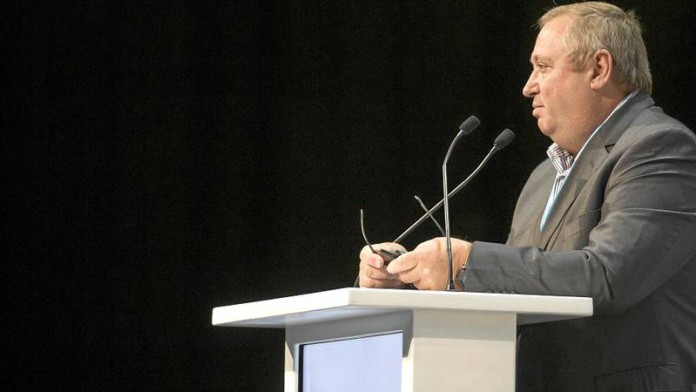
SIBANYE-Stillwater made strides taming its balance sheet following a potentially chapter turning operating performance for the third quarter.
Commenting in a production report today, the company said the net debt to earnings before interest, tax, depreciation and amoritsation (EBITDA) had reduced to 1.7x from 2.5x at the half year point.
The target is 1x net debt to EBITDA. If Sibanye-Stillwater gets into this territory it will resume dividend payments, its CEO Neal Froneman said. This was anticipated in the latter half of the firm’s 2020 financial year which kicks off in January.
The market looks at the net debt to EBITDA ratio because it shows how well the company is able to cover its debts. Sibanye-Stillwater has to make sure the ratio doesn’t stray to a ratio of 3x at which point it would break agreements with its lenders.
Lenders were relaxed enough about the firm’s indebtedness to enter into a refinancing of its revolving credit facility (RCF) earlier this month in which the existing R6bn facility was replaced with a R5.5bn facility with the option of extending it R2bn.
Today’s numbers demonstrated a highly significant recovery in the health of the firm’s South African gold mines as well as the benefits of having bought Lonmin which increased total group platinum group metal (PGM) production at a time when the rand basket price for the metals is flying.
Group adjusted EBITDA increased 240% to R5.5bn or $377m which was dominated by the R2.9bn contribution of its South African platinum group metal (PGM) mines. Despite some challenges, the US operations (Stillwater) contributed R1.8bn to the EBITDA number while the gold mines in South Africa contributed a welcome 15% of total equal to R843m.
“With precious metals prices rising further into Q4 2019 and further enhancement of our safe production delivery, the outlook for the remainder of the year remains positive,” said Froneman in commentary to the published figures.
Shares in Sibanye-Stillwater were nearly 3% higher in the first few hours of trade on the Johannesburg Stock Exchange taking the share to a three-year high of R28,77/share – less than a rand below the firm’s all time high of R29,22/share.
The only drawback was continued geotechnical ground problems at Stillwater Mining, the US firm Sibanye-Stillwater bought for $2.2bn in 2016 – a factor behind the increase in net debt and subsequent suspension of the dividend.
Sibanye-Stillwater consequently adjusted downwards full year PGM guidance from Stillwater to 590,000 to 610,000 oz compared to previous guidance of 625,000 to 640,000 oz.
“Although these operational challenges have affected production for 2019, the impact is expected to be temporary, with the long-term trajectory of the Blitz production ramp up unchanged,” the company said. Blitz is an expansion project at Stillwater which is hoped will catalyse the operation taking 2E platinum group metal production up about 50% to approximately 850,000 ounces annually.
Guidance for the South African PGMs was unchanged at one million to 1.1 million oz whilst production from the gold mines would come in at the low end of the scale with production expected to be between 514,000 and 546,000 oz.
Goldman Sachs said the performance was “mixed” referring to the issues at Stillwater, but it added: “While not good, we believe this slower production is more than offset by the palladium at record highs, strong ZAR basket price and return of gold operations”.







